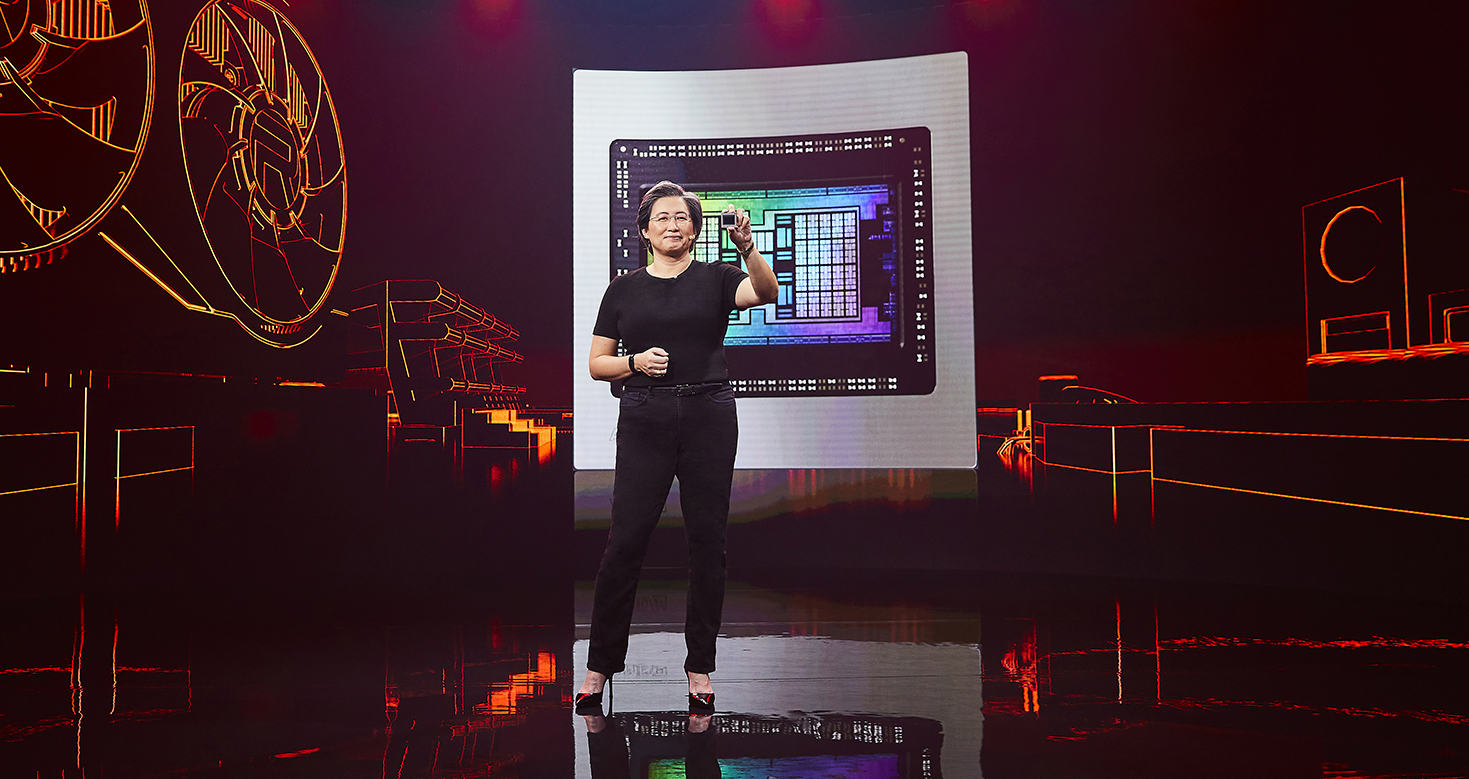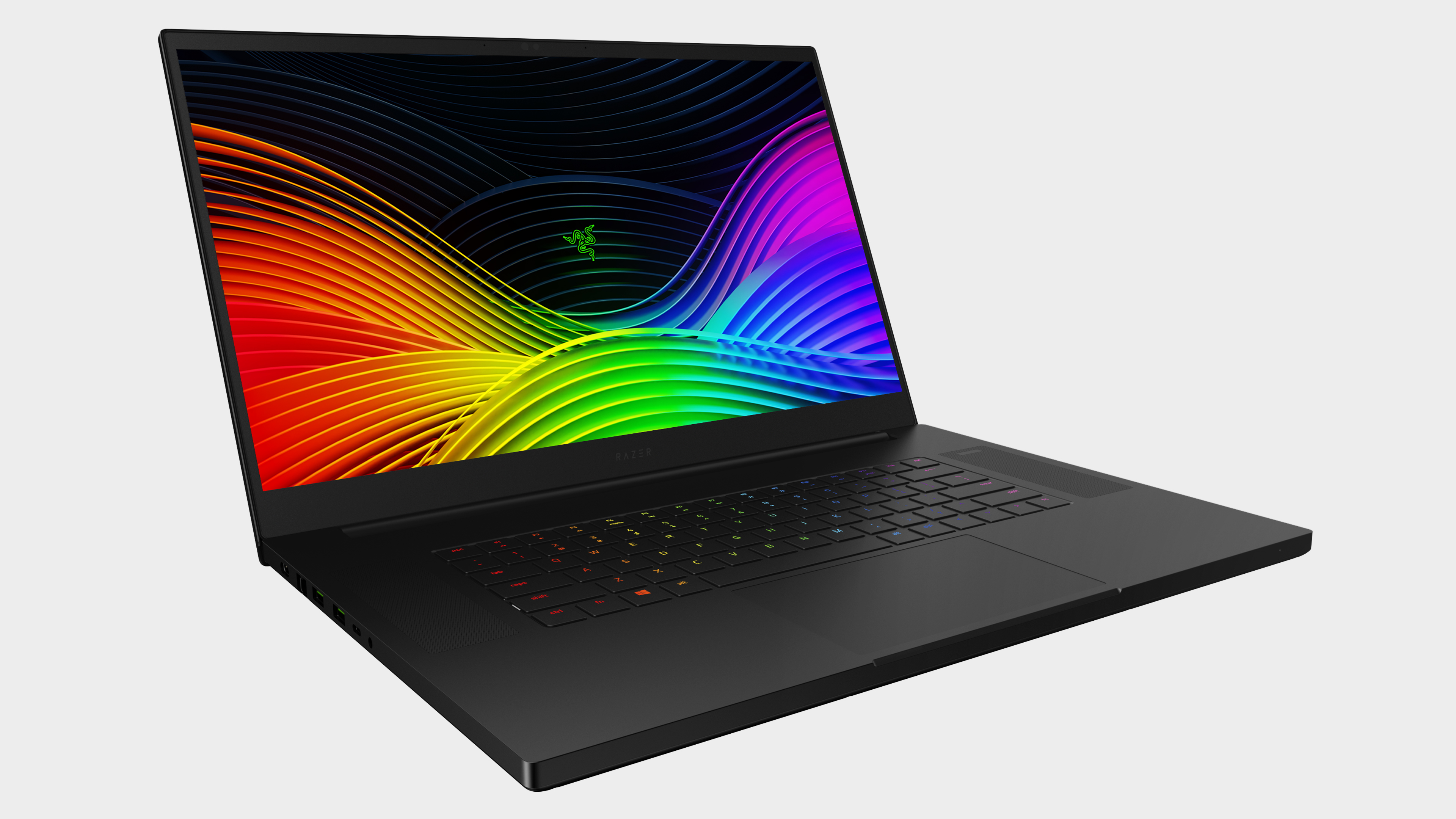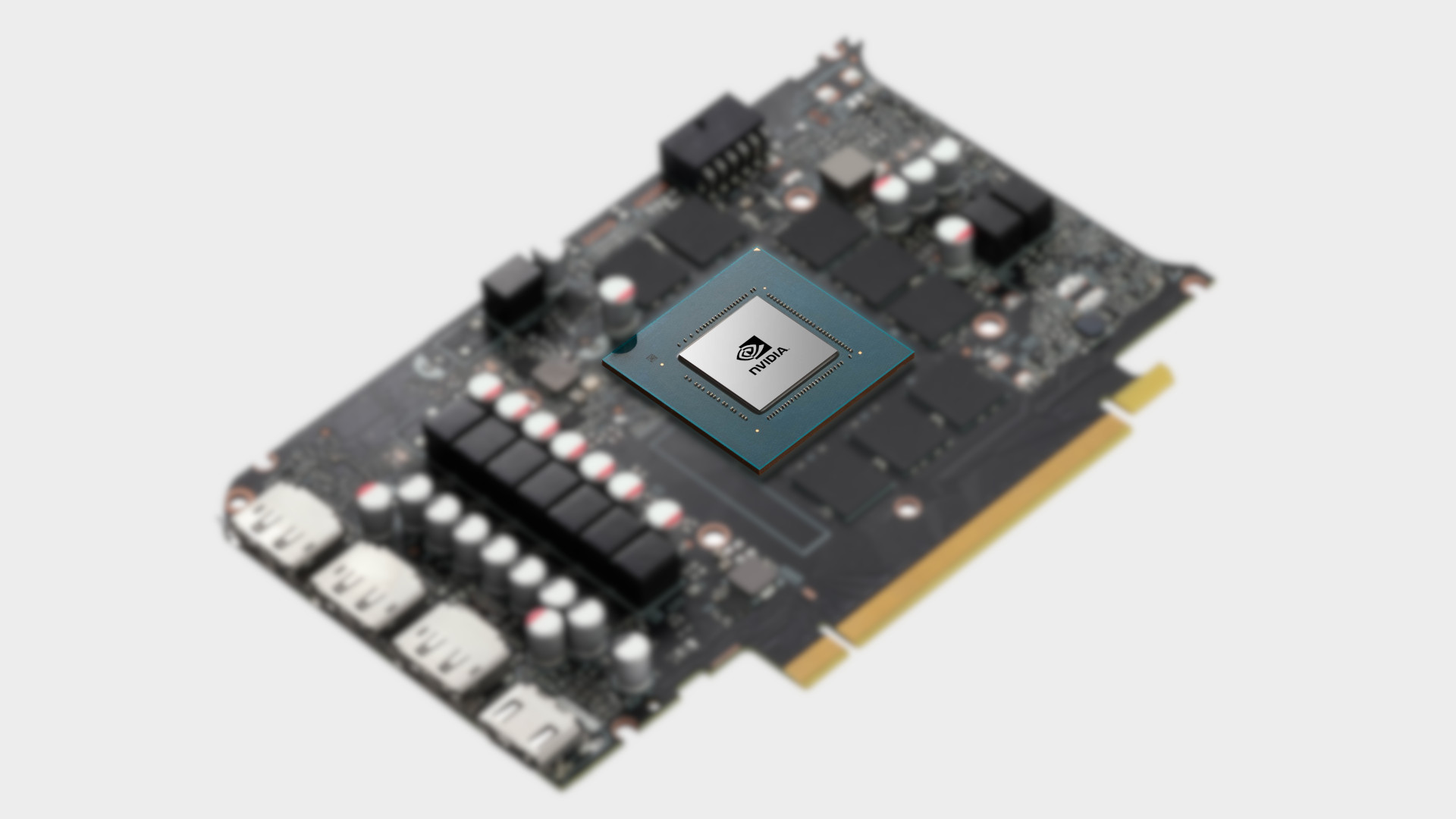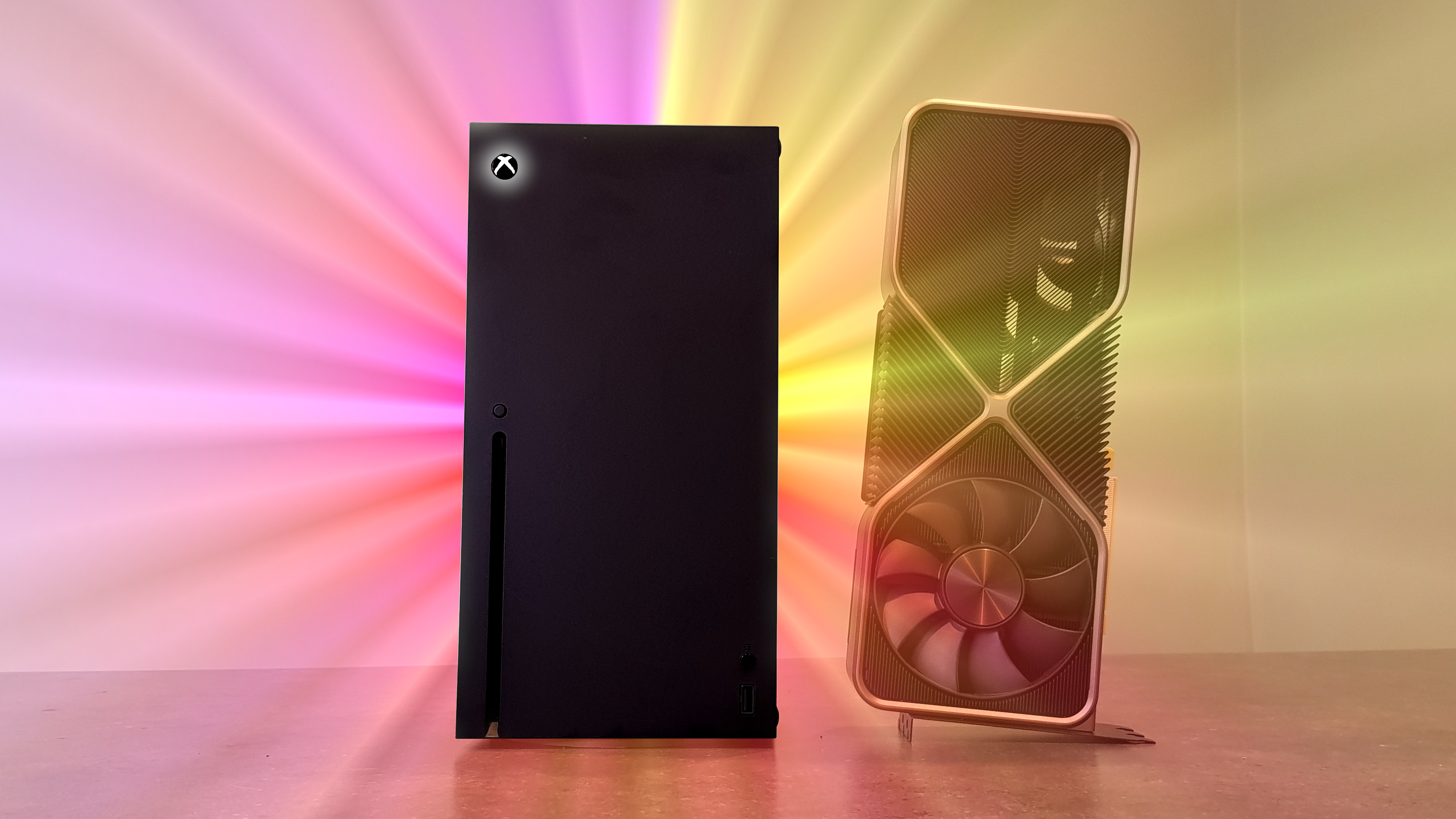The biggest PC gaming questions Nvidia needs to answer in 2021
And they're not all about the number of spatulas in Jen-Hsun's kitchen.

Whatever happens in the previous 12 months for Nvidia, every year is always 'the biggest year in the company's history'. As one of the PC gaming tech's continual success stories—despite whatever PR and marketing fails it periodically throws down to add a little fallibility to proceedings—Nvidia aims to keep pushing gaming and AI tech further with every passing year.

And what about Nvidia's rivals?
The questions AMD needs to answer in 2021
The questions Intel needs to answer in 2021
Which means it can't rest on its laurels, especially now that it has genuine competition in the GPU space from an ever more resurgent AMD. Having put its Zen CPU learnings towards graphics silicon development the AMD RX 6800 XT has become a true rival to the Nvidia RTX 3080, and one of the best graphics cards of all time.
There are a number of big questions it needs to answer in 2021 to make this year a true success, and not all of them in gaming. Is Nvidia actually going to be able to complete the purchase of Arm? That's probably the most important one to nail down from a company perspective, and the one that could have the biggest impact on its future growth. But that's not going to deliver higher, smoother, prettier frame rates in our games, so I'm going to leave that to stock market analysts 'cos they get paid more than me to opine spurious with unbidden rants.
What I want to cover are the questions Nvidia needs to answer in 2021 which will matter most to us PC gamers.
Can Nvidia keep AMD at bay all year?
This is arguably the biggie when it comes to its main rival. Does Nvidia have the strength in its product roadmap to keep the screws on a suddenly more powerful AMD, and keep its nose in front in the ultra-competitive GPU market?
You can argue, and we generally do, that Nvidia has won the next-gen flagship GPU battle, with the RTX 3080 just about having the edge over the RX 6800 XT, despite the Radeon card's lower sticker price. The power in the Nvidia ecosystem, with stellar ray tracing chops, serious 4K performance, and the technical wizardry of DLSS, all combine to give the RTX 3080 the win. Though it's closer than I can remember it ever being.
The ultra-enthusiast space, however, can do one.
The biggest gaming news, reviews and hardware deals
Keep up to date with the most important stories and the best deals, as picked by the PC Gamer team.
The Nvidia RTX 3090 can make the argument that it's for creators not gamers, which is lucky because it makes little sense for anyone not video editing with fancy effects or 3D modelling. The AMD RX 6900 XT, however, can't really claim any of that and so falls rather flat. But either way, us gamers can pretty much ignore the rarefied air of the $999+ graphics card.

But there is more than the $699+ desktop GPU market to worry about. Gaming laptops are big business and there are new GPUs—as well as new CPUs, of course—about to hit the public consciousness post-CES 2021. Nvidia is likely to fire first, with its mobile versions of the RTX 3080 and RTX 3070, all seemingly based on the GA104 silicon used in the desktop RTX 3070.
AMD, for its part, is said to be also dropping its lower-spec GPU, the Navi 22, into its mobile graphics cards. That will likely have the effect of the red team not being quite able to match the high-end gaming power of Nvidia-based laptops, instead favouring the more mainstream machines. Though there are rumours of 16GB mobile GPUs on the way, which could be indicative of high-end Radeon laptop chips.
There will likely also be refreshes of the current crop of AMD and Nvidia desktop GPUs towards the end of 2021, with the green team's Super versions already being ground up in the tech rumour mill. Those cards will be specifically designed—and priced—to ensure that Nvidia keeps the higher ground on AMD, no matter what its rival does in terms of its own refreshes. Well, so long as it can get a bead on what the competition is up to, and isn't getting jebaited again.
But what about lower down the stack? Well, that's where we come to...

Can Nvidia deliver a sub-$250 Ampere GPU that beats Navi?
The mainstream graphics card market is next up on the PC hardware agenda once next-gen gaming laptops hit the shelves. We've had the super high-end cards, very high-end cards, high-end cards, and moderately high-end cards released from the green team's Ampere generation so far, but what about the rest of us without cash to burn? Arguably the $250 GPU market is the biggest around, and the place where a ton of graphics cards will undoubtedly get sold.
Whoever holds the best option at that more modest price point stands to make a killing. And that's one place AMD has historically been better at competing over the last few generations, so Nvidia is going to have to be smart about its mainstream GPU plans.
Of course, a lot rests on the trickle down effect, and because the RTX 3080 is held as the top graphics card right now a lot of gamers will opt for whatever Nvidia drops into that price point no matter what AMD does. But if the lower-spec Radeon GPUs can be as competitive as their more expensive RDNA 2 brethren and undercut Nvidia's mainstream Ampere cards, I can see a lot of people switching sides.
And down at this price point ray tracing prowess almost becomes a moot point unless Nvidia can mitigate the performance penalties of turning the fancy lighting tech on for its lower-end cards. And that makes it more of a straight fight in terms of rasterizing performance, and AMD is right up there with Nvidia on that point.
So, it could be an even closer run thing at this level than at the high end.

Can Nvidia actually build enough GPUs to please gamers?
Maybe this is really the biggest question for Nvidia in 2021. However good your graphics cards are that doesn't mean a thing if no-one can actually buy one. That was the perennial issue around the tail-end of 2020, with every new hardware launch being accompanied by stories about how many units the bots made off with and just how many seconds it was for every store to ran dry of their release day stock.
Given that experience, the lessons should have been learned. Though how much time you allow for inventory to fill before launching a new product is one of those how-long-is-an-RGB-strip kinda things. With demand being as it is you could hold a release for months and still run out of stock on day one. Nvidia claimed it could have sold five times the number of RTX 3070 cards it did based on its launch day experiences. And that GPU was already delayed to allow for greater stock to hit the channel.
Nvidia does at least sit in a potentially better position than its competitors given that it's using a separate foundry to manufacture its GPUs. The 8nm chips at the heart of its Ampere cards are forged in the fires of Mount Samsung, and not in the over-subscribed TSMC foundries. That could give Nvidia a better shot at ordering more GPUs to satisfy demand, while TSMC is likely to be less flexible given that everyone else is using its fabs.
The flipside of that is there were some reports suggesting that Samsung's 8nm production was a little rough and yields of the Nvidia chips weren't great. There has since been no confirmation so it's tough to know what to believe on that front as no-one's going to release such sensitive yield data right now.
There's also the frankly terrifying zombie phoenix of Bitcoin, along with the ensuing alt coin resurgence. That makes me fear for a return to the days of mining corps. making off with any and all graphics cards coming off the assembly line before they can get into the hands of gamers. We can only hope it's short-lived and doesn't become a year-long 'thing' all over again.

Will game development targeting the AMD-based consoles impact Nvidia?
Given that both the PlayStation 5 and the Xbox Series X are built on both AMD's current CPU and GPU architectures, there has been the expectation that with game development aiming specifically at the red team's tech it would have some sort of potential performance advantage.
And if that happens it could start to sway the GPU performance metrics towards the red team and away from Nvidia. If the vast majority of games released in 2021 start to perform better on equivalent AMD silicon then Nvidia is going to have its work cut out trying to bridge the gap.
That's a big if, however, and whatever the volume of next-gen consoles ends up being throughout this year, Nvidia still owns around 80 percent of the discrete PC GPU market, and that's a number developers and publishers aren't going to ignore when they consider optimising for a PC release.
There could also be a plus for Nvidia having console game development on consoles targeting the latest AMD tech too. And that's the potential boon in the number of new titles launching with ray tracing tech baked into them. From what we've seen so far the new RDNA 2 cards aren't at the races when it comes to ray tracing on the standard DirectX Raytracing API, but the consoles will still be taking advantage of the shiny lighting feature to some extent.
Devs will become ever more used to adding in different fidelity settings to their games—we're already seeing titles such as Dirt 5 asking console folk whether they want to prioritise frame rates or pretties—and they will likely have ray tracing on and off settings for console versions. It's a short hop, skip, and jump to creating another level of ray tracing fidelity in compatible games to really show off what is possible on high-end PC hardware.
And when it comes to ray traced visuals right now, Nvidia owns high-end PC hardware.

Dave has been gaming since the days of Zaxxon and Lady Bug on the Colecovision, and code books for the Commodore Vic 20 (Death Race 2000!). He built his first gaming PC at the tender age of 16, and finally finished bug-fixing the Cyrix-based system around a year later. When he dropped it out of the window. He first started writing for Official PlayStation Magazine and Xbox World many decades ago, then moved onto PC Format full-time, then PC Gamer, TechRadar, and T3 among others. Now he's back, writing about the nightmarish graphics card market, CPUs with more cores than sense, gaming laptops hotter than the sun, and SSDs more capacious than a Cybertruck.

